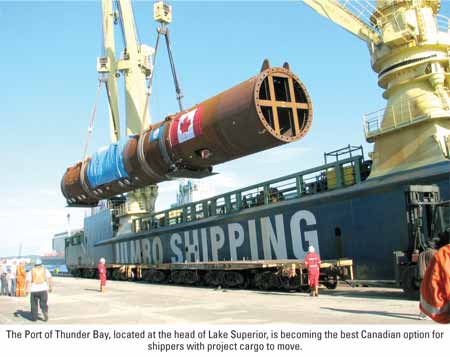
PROJECT CARGO / HEAVY LIFT ‘09 - Thunder Bay finds success moving project cargo West
Jan 28, 2009 | Published in Issue
The Canadian Rockies provide Canada with lumber, coal, fresh water and tourism dollars but they also provide a major impediment to rail transportation between the West Coast and anything east of the mountains.
Other than avalanches and washouts in mountain passes Canada’s two major railways have solved most of the problems involved in mountain railroading, such as steep grades and mountain tunnels with limited clearance. To their credit, Canadian Pacific and Canadian National railways have now made it possible to move double stacked container trains through the Rockies at speeds that were unheard of a decade ago.
However, when it comes to huge dimensional loads and project cargoes, the mountains still offer a formidable obstacle, meaning the massive pieces of equipment required by Western Canada’s oil patch – including the Alberta oilsands - and Saskatchewan’s uranium mines need a different, easier, route.







